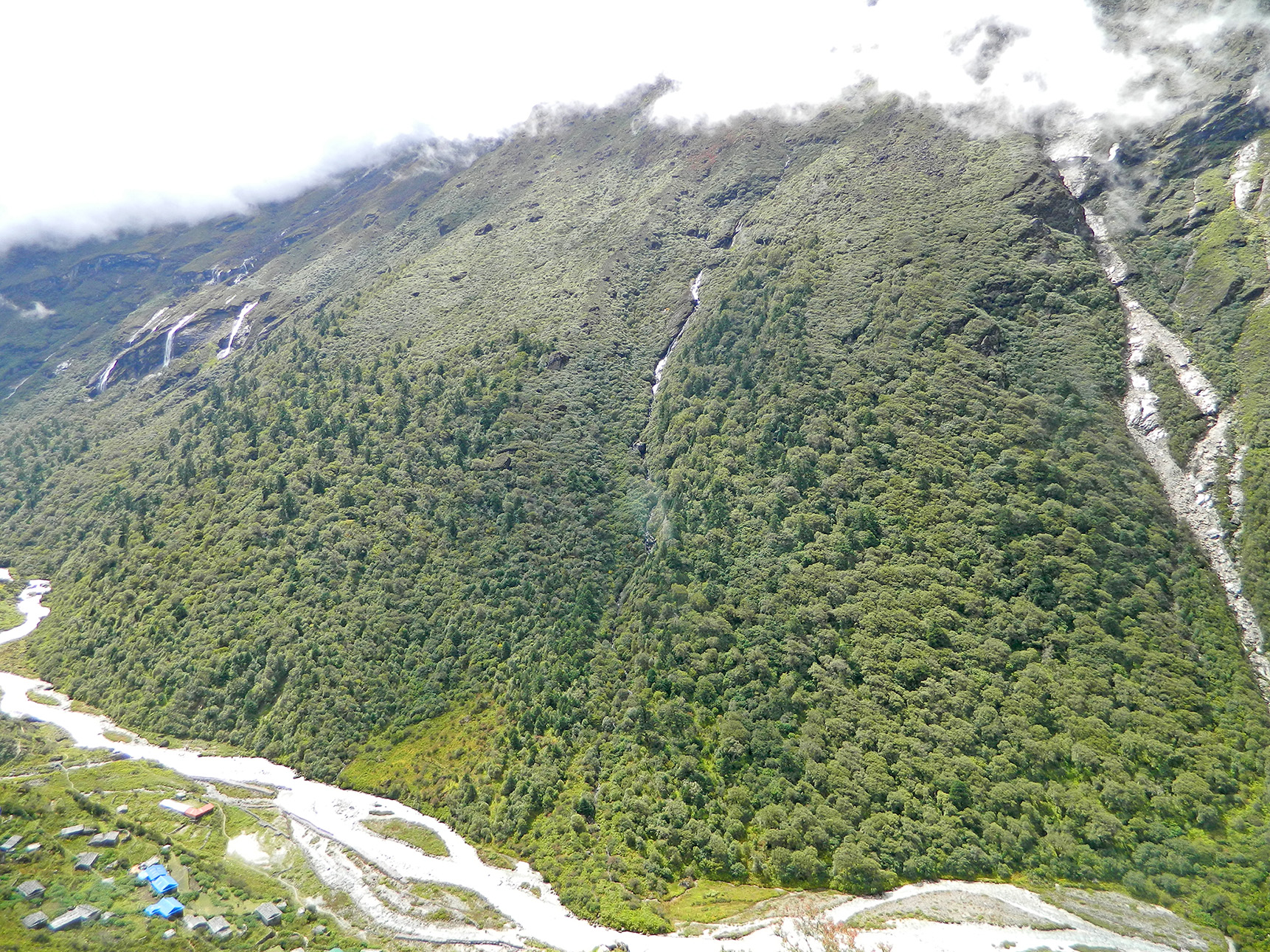Words on Wednesday aims at promoting interesting/fun/exciting publications on topics related to Energy, Resources and the Environment. If you would like to be featured on WoW, please send us a link of the paper, or your own post, at ERE.Matters@gmail.com.
***
Schickhoff, U., Bobrowski, M., Böhner, J., Bürzle, B., Chaudhary, R. P., Gerlitz, L., Heyken, H., Lange, J., Müller, M., Scholten, T., Schwab, N., and Wedegärtner, R., 2015. Do Himalayan treelines respond to recent climate change? An evaluation of sensitivity indicators, Earth Syst. Dynam., 6, 245-265.
Abstract:

Anthropogenic treeline in Manang, Nepal, showing an abrupt transition to alpine grazing lands (Schickhoff, 24 September 2013).
Several sensitivity indicators such as treeline type, treeline form, seed-based regeneration, and growth patterns are evaluated. Since most Himalayan treelines are anthropogenically depressed, observed advances are largely the result of land use change. Near-natural treelines are usually krummholz treelines, which are relatively unresponsive to climate change. Nevertheless, intense recruitment of treeline trees suggests a great potential for future treeline advance. Competitive abilities of seedlings within krummholz thickets and dwarf scrub heaths will be a major source of variation in treeline dynamics. Tree growth–climate relationships show mature treeline trees to be responsive to temperature change, in particular in winter and pre-monsoon seasons. High pre-monsoon temperature trends will most likely drive tree growth performance in the western and central Himalaya. Ecological niche modelling suggests that bioclimatic conditions for a range expansion of treeline trees will be created during coming decades.

Climatic treeline (3900–4000 m) on a north-facing slope in Rolwaling, Nepal (Schwab, 18 September 2014).

